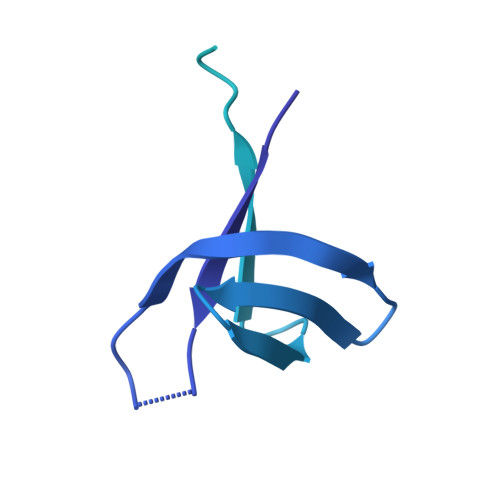Biological and Structural Analyses of New Potent Allosteric Inhibitors of HIV-1 Integrase.
Bonnard, D., Le Rouzic, E., Singer, M.R., Yu, Z., Le Strat, F., Batisse, C., Batisse, J., Amadori, C., Chasset, S., Pye, V.E., Emiliani, S., Ledoussal, B., Ruff, M., Moreau, F., Cherepanov, P., Benarous, R.(2023) Antimicrob Agents Chemother 67: e0046223-e0046223
- PubMed: 37310224
- DOI: https://doi.org/10.1128/aac.00462-23
- Primary Citation of Related Structures:
8BV2, 8CBR, 8CBS, 8CBT, 8CBU, 8CBV - PubMed Abstract:
HIV-1 integrase-LEDGF allosteric inhibitors (INLAIs) share the binding site on the viral protein with the host factor LEDGF/p75. These small molecules act as molecular glues promoting hyper-multimerization of HIV-1 IN protein to severely perturb maturation of viral particles. Herein, we describe a new series of INLAIs based on a benzene scaffold that display antiviral activity in the single digit nanomolar range. Akin to other compounds of this class, the INLAIs predominantly inhibit the late stages of HIV-1 replication. A series of high-resolution crystal structures revealed how these small molecules engage the catalytic core and the C-terminal domains of HIV-1 IN. No antagonism was observed between our lead INLAI compound BDM-2 and a panel of 16 clinical antiretrovirals. Moreover, we show that compounds retained high antiviral activity against HIV-1 variants resistant to IN strand transfer inhibitors and other classes of antiretroviral drugs. The virologic profile of BDM-2 and the recently completed single ascending dose phase I trial (ClinicalTrials.gov identifier: NCT03634085) warrant further clinical investigation for use in combination with other antiretroviral drugs. Moreover, our results suggest routes for further improvement of this emerging drug class.
Organizational Affiliation:
Biodim, Romainville, France.


















